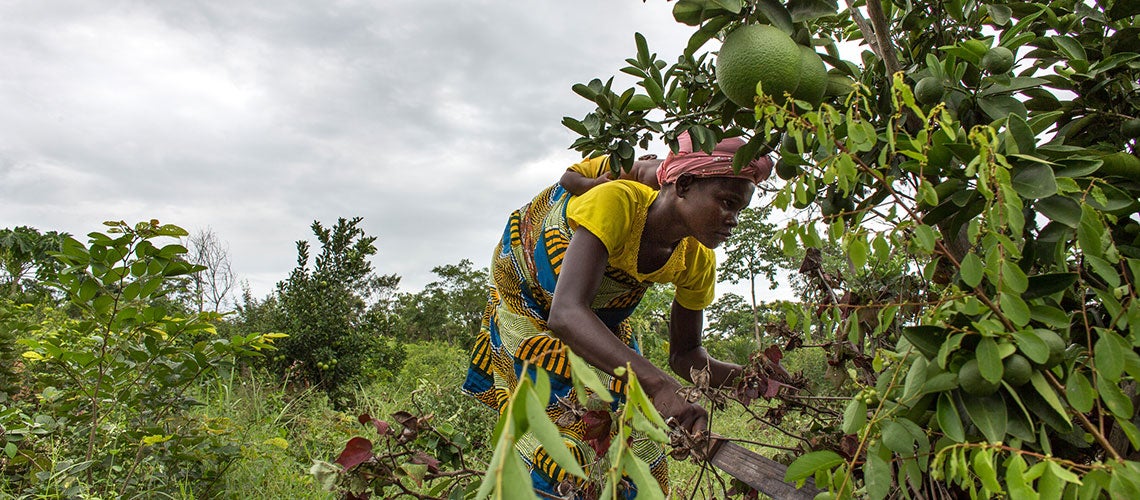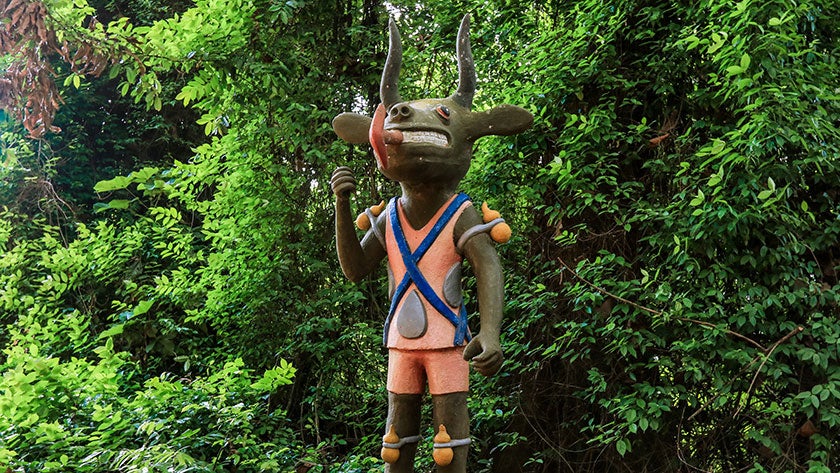 The hidden value of Benin’s forests
The hidden value of Benin’s forests
Benin’s forests provide energy, food, medicine, places of worship and income that support the livelihoods of thousands of communities. They also regulate the air they breathe, the water they drink, and provide a home for animals. But between 2005 and 2015 Benin’s forest cover dropped drastically by over 20% (from 7.6 to 6 million hectares) and deforestation rate continues to be very high at 2.2% annually. Rapid demographic growth, poor forest governance, slash-and burn agriculture, illegal logging and unsustainable wood cutting for energy and cooking have put the outstanding forests in jeopardy. Therefore, it’s time to remind all the benefits of Benin’s forest:
Their value on poverty reduction is underestimated. The World Bank’s Forest Action Plan indicates that the impact of forests on poverty is felt the most in Africa. Forest-related income can lift 11% of rural households out of extreme poverty and forests can sustainably enhance food security. In Niger, farmer-managed forest regeneration on five hectares has doubled agricultural yields and could yield to the equivalent of US$500 million in nitrogen fertilization and 30 to 50 million tons of carbon sequestered. On a global scale, it is estimated that tropical forests can provide ecosystem services of up to $3,000 per hectare per year.
In Benin, forest ecosystems remain a hidden value. If well managed and preserved, forests will boost economic growth, alleviate poverty and sustain a healthy living environment. The recently published Benin Forest Note sheds light on some of these values.
Forests generate tourism revenues. The heart of Beninese forests is found in the northern part of the country with the Pendjari National Park and the W National Park. Covering 1.26 million hectares, these parks harbor a unique biodiversity and key wildlife for West Africa. They are the basis for nature-based tourism industry, offering employment and earnings for communities. Since 2010, the Pendjari National Park has hosted about 6,500 tourists yearly.

Forests have a religious value. Benin has around 3,000 sacred forests which are protected with a first-of -its-kind legislation in Africa, providing legitimacy to traditional beliefs. Communities have high reverence for forests providing a forum for social, cultural and religious activities. They also offer vital medicines. For example, kinkeliba bush treat liver problems, Cochlospermum planchonii flowers help fertility in women and the sacred garlic pear is used as an antiseptic.
Forests produce timber and other high value products. Benin exports a significant amount of timber: in 2018, 102,000 m3 of Teak and Gmelina were exported. High valued products such as shea are the third largest export contributing 1.2% to the GDP while honey generates US$140,000 in revenue each year. Other products such as wild mushrooms, tamarind, African locust bean and baobab, among others, create income and job opportunities. Strengthening the value chains for these non-timber forest products would have a significant impact on the livelihoods of rural women and youth mainly involved in harvesting and processing activities.
Forests provide an important source of energy in Benin. With the inadequate energy supply, wood fuel and charcoal for cooking filled 46% of the country’s energy demand in 2017. Fuelwood and charcoal production contribute 2.4% to the national economy but remain informal. The wood energy value chain employs 200,000 people with annual sales reaching nearly US$12 million.
Mangroves help combat coastal erosion. Benin’s coast is exposed to the highest rate of coastal erosion in the Gulf of Guinea. The cost of coastal erosion in Benin was estimated at over $117 million in 2017, impacting the lives of thousands of communities. Mangroves provide one of the most effective solutions to address coastal erosion by controlling water levels and preventing soil erosion. As proven in other countries, coastal areas with extensive mangrove cover suffer less damage and loss of lives than areas without them.

The good news is that the Government of Benin recognizes the importance of investing in forest production and in safeguarding its forests to support the national economy. To strengthen the governance of the sector, it has recently updated its forest policy, forest code, and is now improving its forestry tax system.
The World Bank is also actively engaged in sustainably managing Benin’s forest resources. The $ 60 million Benin Gazetted Forest Management Project aims to improve the sustainable management of forests in 13 state-owned forests. It promotes sustainable large-scale Acacia and Teak plantations to support both timber production and energy need. It also seeks to improve forest governance and promote non-timber forest value chains and markets in order to create jobs and improve livelihoods. In only a few months, the Project created 1,350 jobs in reforestation activities. Project beneficiaries received cash on a by-weekly basis through mobile transfer after verification of their performance. By end-December 2020, 3,200 jobs will be created for reforestation activities with a total transfer of USD 3.8 million injected to the local economy.



Join the Conversation